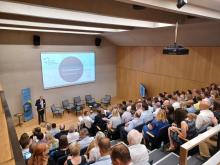The over-riding message, from the planning and permitting experts was that regulators are still too “preoccupied with old-style environmental imperatives to have properly embraced the concept of sustainable development.”
Ken Hobden, Director of Mineral Planning
The conference highlighted that continuing over-emphasis on often competing environmental interests is making sustainable minerals more difficult to deliver. The balance is most definitely swinging away from the planning permission as the primary component of the licence to operate.
Lucy Binnie of Land and Mineral Management concluded her presentation by saying: “It is increasingly difficult to see how progressing planning and environmental permitting in parallel is the best option for most proposals. The environmental permit is seen by many as the most risky and arduous to obtain and therefore should be undertaken first. Intuitively, this seems totally out of sync with the balance of interests approach necessary to deliver sustainable development.”
In addition, a major concern was the widely-held view that “the decisions of the Planning Inspectorate can no longer be relied upon to pull mineral planning authority decisions back in line with government objectives, when local political imperatives increasingly allow little weight to be attached to sustainability.”
The issue of inert infill for quarry restoration and the insistence of the
Hugh Lucas, chairman of MPA’s Environment & Mineral Planning Committee, commented: “The Environment Agency’s position on inert fill for quarry restoration is getting in the way of maximising the sustainability benefits of mineral working. There is a perception that the attitude of the EA is more focussed on process than outcomes. It would be good for industry and the EA to be able to work together to help secure the implementation of planning permissions for sustainable development.”
The conference also examined the Nationally Significant Infrastructure Planning (NSIP) process and gave members some practical advice on delivering sustainable water management in the minerals industry. MPA’s Water Working Group continues to be closely involved with the EA regulatory reform process.





